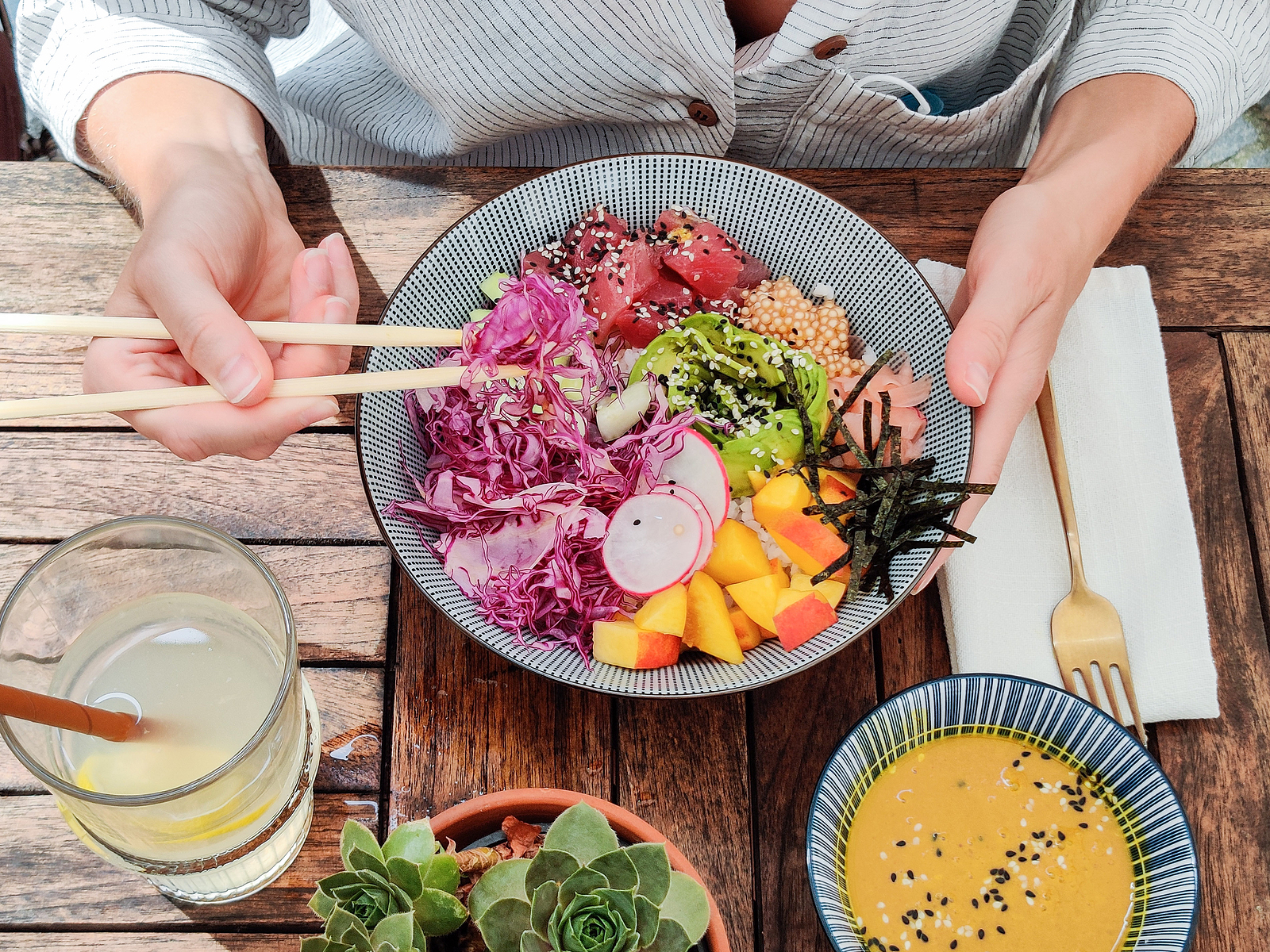
What is Mindful Eating?
Many of us lead fast-paced lives, and if we are not busy thinking about yesterday, we are probably busy planning for tomorrow. When we fixate on the past and future, we are likely not paying a lot of attention to the present. Sound familiar?
The practice of mindfulness is simply an invitation to step out of the chaos in our minds and zero in on what you are sensing and feeling in the moment without judgment. This practice has helped many to live more intentionally and develop the skills necessary to manage and cope with their physical and mental health1.
Recently, mindfulness has gained attention as an approach to eating and is referred to as mindful eating2.
In essence, mindful eating is the act of being present and attentive to our food and eating experience, without judgment. This approach aims to transform our relationship with food by becoming more attuned to our bodies during the eating process.
What are the Benefits of Mindful Eating?
Mindful eating has been shown to have many benefits, including3:
- Slowing down and taking a break from the daily grind.
- Taking more pleasure from the food you eat.
- Choosing foods that make you feel good after eating, both mentally and physically.
- Improving your digestion by eating slower and chewing more thoroughly.
- Exploring your physical or psychological reason for eating with curiosity.
- Recognizing your hunger and fullness cues.
- Making a greater connection to where your food comes from and how it gets from farm to table.
What Does Mindful Eating Look Like in Practice?
Mindful eating looks different for everyone and will take some time and practice for mindful eating to come naturally. However, the process can be broken down into 10 simple practices (listed below) that you can start putting into place today. Start with one and gradually build up from there.
10 Ways to Practice Mindful Eating:

- Understand your Motivations. Understand how you are feeling before you eat. Are you eating out of boredom, comforting an emotional yearning, satisfying a desire, or responding to your body’s physical needs?
- Eliminate Destractions. Instead of eating on the go, in front of the computer or television, or while you are scrolling, sit at a table in a quiet and peaceful environment, where you can give your meal your undivided attention.
- Express Appreciation and Gratitude. Take a deep breath and pause. Take a moment to reflect on everything and everyone involved in the process of bringing your meal to the table. Silently express your gratitude for the opportunity to enjoy a delicious meal, whether it be on your own, or in the company of others.
- Take Small Bites. It is easier to taste, chew, and experience the textures of your food when your mouth is not completely full.
- Chew Thoroughly. Take the time to chew your food well (approximately 20 to 40 chews, depending on the food).
- Eat Slowly. Put your utensils down between bites and don’t pick them up again until you have swallowed. Better yet, take a drink of water before your next bite too.
- Engage your Senses. Direct your attention to the taste, texture, shape, aroma, and sound of your food. Try to identify the different ingredients and flavours in your meal, focus on how the food feels in your mouth, observe the shapes, colours and textures on your plate, savour the sent wafting in the air, listen to the sounds the arise as you chew and swallow.
- Acknowledge when your Mind Wanders. Recognize it, accept it, and then bring your attention right back to the eating experience.
- Listen to your Hunger Cues. Pause in the middle of your meal and ask yourself the following questions: does this food still taste good? Is it still pleasurable? What is my current fullness level? Sometimes you may feel full before the food on your plate is gone. Don’t feel the need to finish what is on your plate if your body doesn’t need it.
- Practice, practice, practice. As you become more practiced and hone you attention skills, mindful eating will become more natural. You will learn to eat mindfully in a variety of settings, alone, and with others.
By paying close attention to how you feel before, during, and after the eating experience - your emotional state, your hunger and fullness levels, the textures and tastes of each mouthful - you will become more in-tune with your body and empowered to make food choices that bring you both pleasure and nourishment.
References
1. Mindfulness. (2009, November 17). Psychology Today. https://www.psychologytoday.com/ca/basics/mindfulness
2. Nelson, J. B. (2017, August 1). Mindful Eating: The Art of Presence While You Eat. PubMed Central (PMC). https://www.ncbi.nlm.nih.gov/pmc/articles/PMC5556586/
3. Introduction to Mindful Eating. (n.d.). The Center for Mindful Eating. Retrieved June 1, 2021, from https://www.thecenterformindfuleating.org/page-1863947

